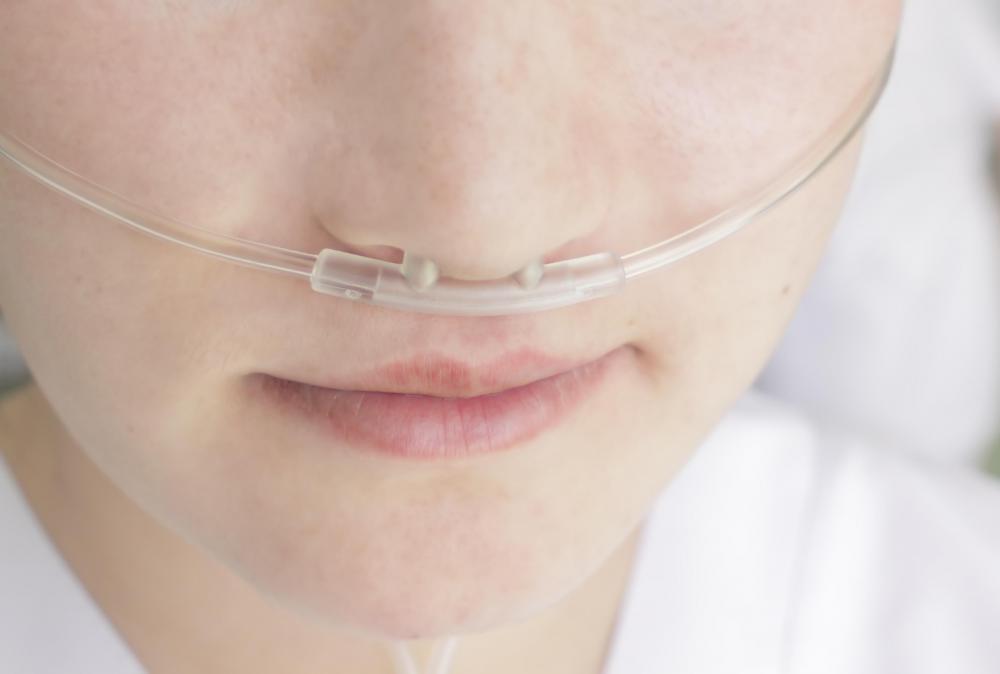At TheHealthBoard, we're committed to delivering accurate, trustworthy information. Our expert-authored content is rigorously fact-checked and sourced from credible authorities. Discover how we uphold the highest standards in providing you with reliable knowledge.
What Is Perioral Cyanosis?
Perioral cyanosis is the term used to describe the occurrence of a blue coloring around or in the mouth. Tissues typically affected in this type of cyanosis include the lips, tongue, and gums. This type of cyanosis is also known as central cyanosis. The common causes of cyanosis are problems with circulation or breathing, drug overdose, and continuous seizures. Cyanosis of the mouth area may also be caused by a pulmonary embolism or atherosclerosis.
Low blood oxygenation results in perioral cyanosis. Blood is normally red in color and can deepen or lighten depending on the amount of oxygen present. When oxygen saturation is low, the blood turns deeper in color and present as a blue color when the levels of oxygen become very low. This, in turn, provides the blue tint to the tissue because of the blood vessels under the skin.

Respiratory diseases and illnesses are one of the primary causes of cyanosis around the mouth. With these conditions, breathing and general function of the lungs are diminished. By not being able to work at proper capacity, the amount of oxygen taken in becomes less than normal. This reduces the amount of oxygen that is delivered into the blood and passed through the body.

Cardiac diseases and illnesses are another one of the primary causes of perioral cyanosis. Proper heart function is important to ensure that the blood flows through the body and gets to the vital organs that rely on the nutrients and oxygen carried in the blood. When the heart cannot pump blood, the amount of oxygen that is circulated drops. Additionally, if the blood vessels become clogged by an embolism or they suffer from narrowing caused by atherosclerosis, blood does not circulate properly. These problems result in low oxygen levels and the blue appearance of the tissues in or around the mouth.

Although frequently unexpected, drug overdoses can result in cyanosis around the mouth. There are many drugs, both illegal and prescription, that are capable of interrupting normal respiratory and cardiac functions. An overdose of drugs most commonly causes respiration to drop or stop completely and heart rates to rise or fall drastically. This can cause a drop in oxygen saturation and lead to the blue tinting that occurs.

Continuous seizures, with or without loss of consciousness, are also common causes of perioral cyanosis. Convulsive disorders commonly cause interruption in respiratory and cardiac function. Longer convulsions result in longer periods without oxygen. The blue color that appears around or in the mouth generally subsides as the convulsions stop and the sufferer’s breathing returns to normal.
Treatment for perioral cyanosis includes oxygen therapy to increase levels and assist in breathing. Underlying causes of the reduction in oxygen levels must also be treated to prevent a relapse. Treating the cyanosis quickly is imperative. The body can suffer from organ and tissue damage when it suffers from prolonged periods of low oxygen levels.
AS FEATURED ON:
AS FEATURED ON:














Discussion Comments
I have a bluish tint to the skin of my upper lip. It is shaped like a mustache and is about 1/4 inch high and about 2 inches wide. It starts about 1/4 inch below my nose, about 1/4 inch above my lip. My lips and gums are not blue - my dentist even commented on my pink gums at my last visit.
I have had two doctors look at it. At first they just glanced at my lip said it was just a light mustache, and I should just shave it off. When I asked them to really look closely at my lip, they saw there were no hairs, but that there were bluish vessels under the skin, but they did not know why I had them, nor were they concerned about them.
I have had this discoloration for about a year now. Sometimes it is lighter blue, other times a darker, grayish blue. I don't know what to do about it. I just hate to get on a seeing-the-doctor-with-no-answers-merry-go-round.
Post your comments